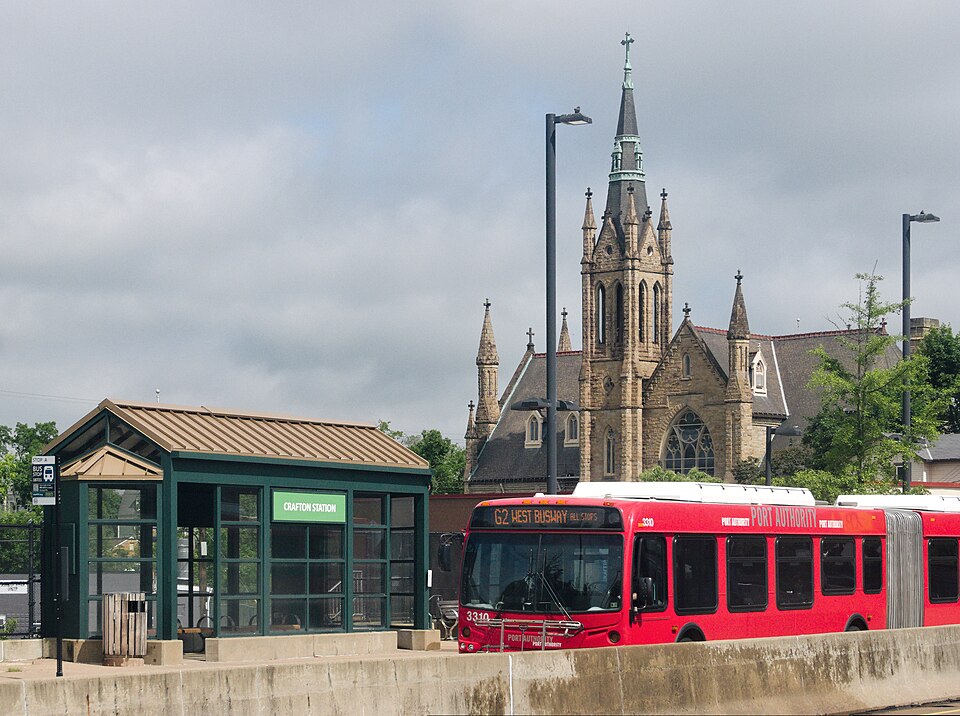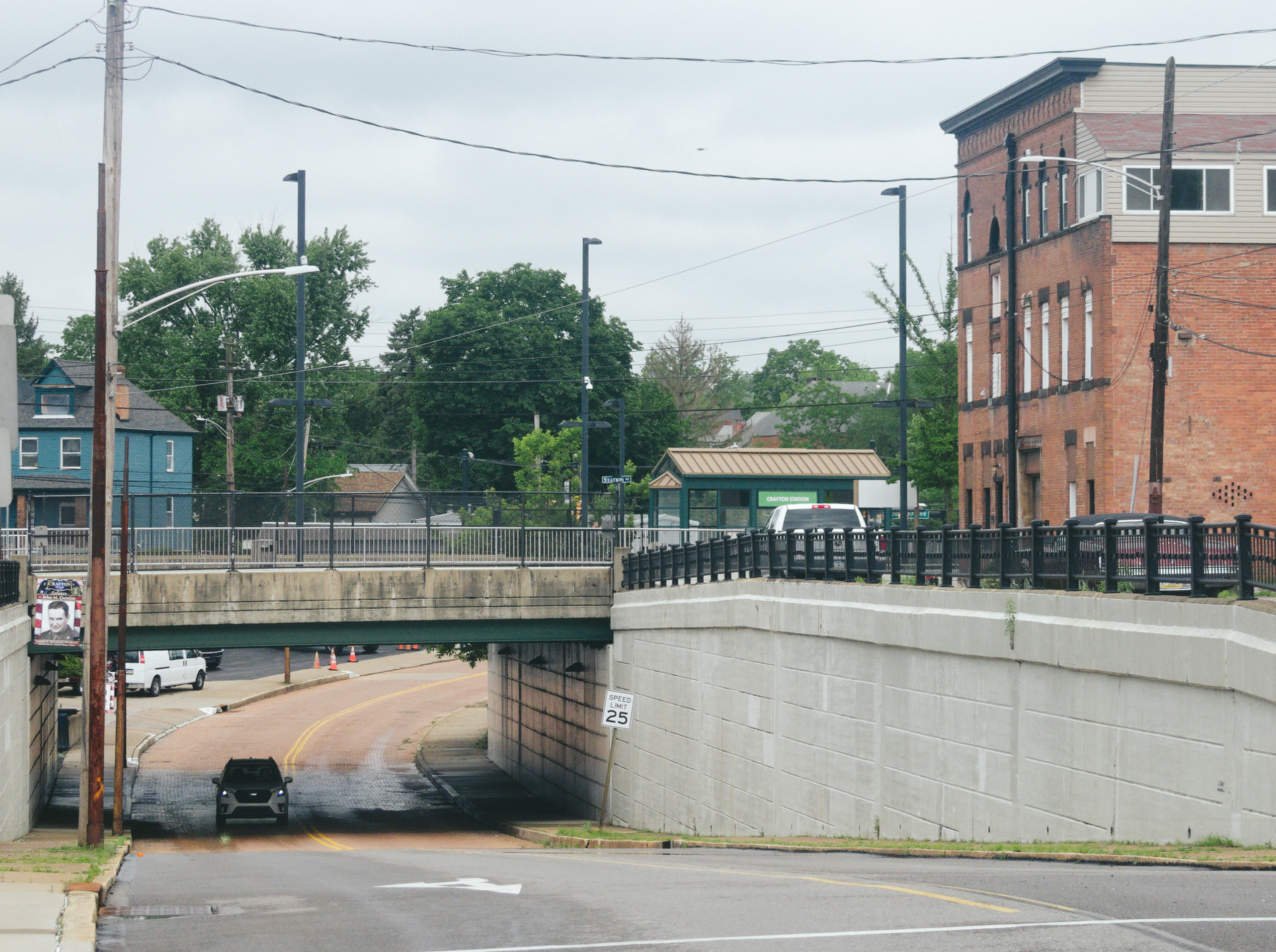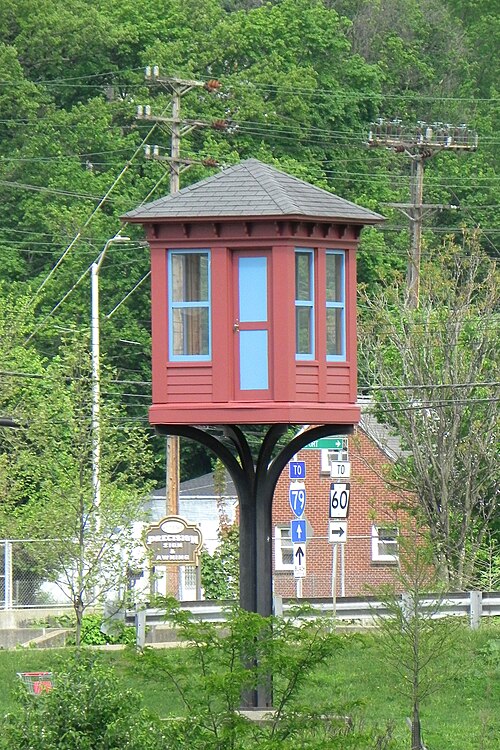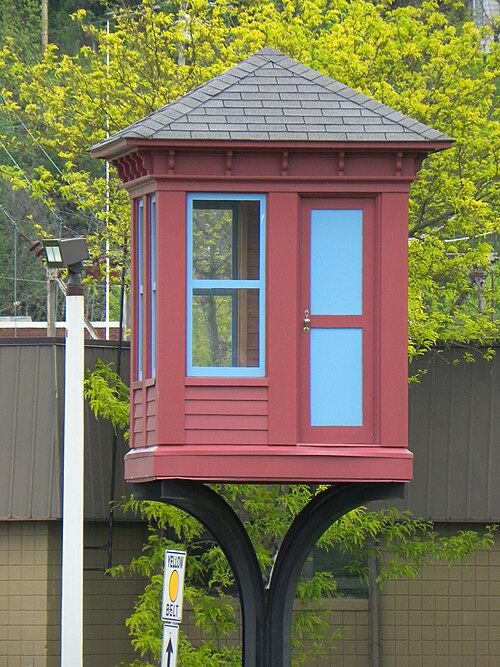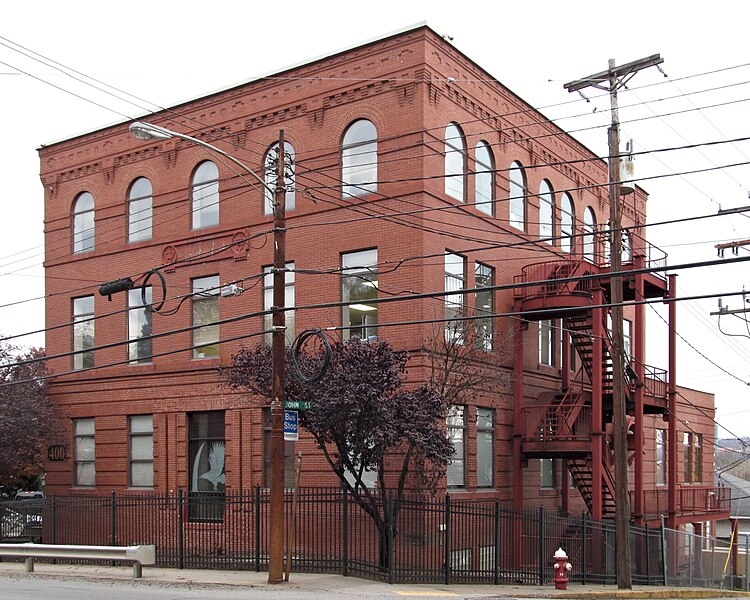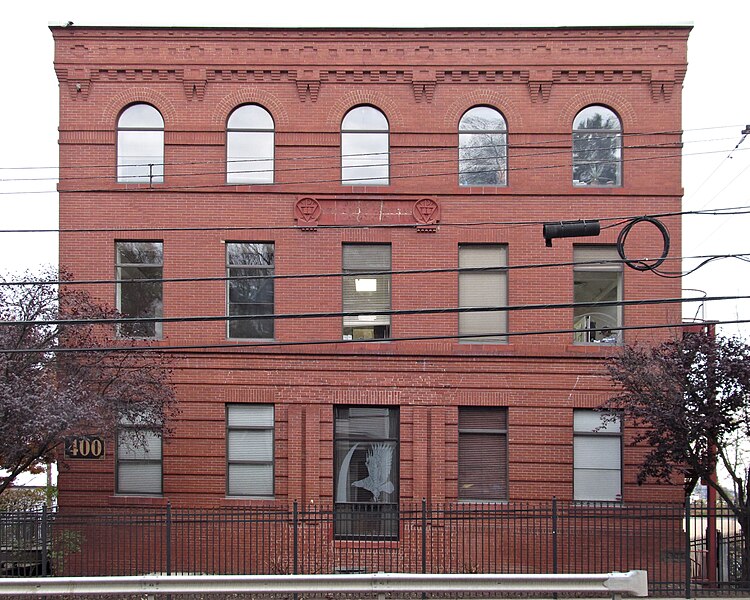
Very few people pay any attention to the Manor Building. It would be a large building except for the fact that it lives against a backdrop of much larger buildings, so its blackish bulk—which was originally blue—makes little impression in the postcard view of Pittsburgh from Mount Washington. But it has an interesting history.
The building was announced in 1955; the design was by Wyatt C. Hedrick of Fort Worth.1 The owner was the Pennsylvania Railroad, which was investing heavily in real estate. Executives noticed that Pennsy stations often sat on valuable land in expensive business districts. Why should all that value go to waste when you can build upward and profit from rentals? “Utilization of the air rights over railroad property where the property is strategically located in Downtown areas is becoming more prevalent,” the Press reporter noted when this building was announced.
That was what was going on here. For a long time the Pennsylvania had had a small commuter station here—the Fourth Avenue station. It was at the mouth of the tunnel that is now used by the subway. The station itself was a small building and a couple of platforms, but the land had become very valuable. So the plan was to build three floors of parking garage, and then ten floors of offices above the garage. There would still be a station in the basement. It should have been a profitable scheme.
From the beginning, however, there seemed to be a curse on the building. “It suffered one delay after another while being built,” said a Post-Gazette story in 1961.2 “Then, after finally being completed in 1958, it was tied up for a year by litigation involving the contractor.”
By the time it was ready for renters, the building was notorious. People called it the Blue Elephant—and nobody wanted to move in.
Not until 1961 did the building overcome its jinx and begin to fill up. After that it prospered. By the next year, it was completely filled.
So there you have the story of the Blue Elephant, and now that you have heard it, perhaps you will notice the building the next time you pass it on the Crosstown Boulevard or go under it on the subway. Then you will forget it again, because it does not make much of an impression on the skyline.
Comments





